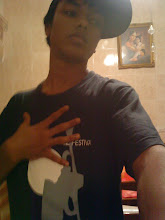

Examples of hand drawn anime
Anime is traditionally hand drawn, buttechniques have become quite common in recent years. The subjects of anime represent most major genre of fiction, and anime is available in most motion-picture media ranging from television broadcast to literature. In Japan, the term does not specify an animation's nation of origin or style; instead, it is used as a blanket term to refer to all forms of animation from around the world. In English, dictionary sources define anime as "a Japanese style of motion-picture animation" or "a style of animation developed in Japan". Anime is occasionally referred to as Japanimation, but this term has fallen into disuse.

Although the term was coined outside Japan to refer to animation imported from Japan, it is now used primarily in Japan, to refer to domestic animation; since anime does not identify the country of origin in Japanese usage, Japanimation is used to distinguish Japanese work from that of the rest of the world.
 In Japan, manga can additionally refer to both animation and comics. Among English speakers, manga usually has the stricter meaning of "Japanese comics".The term "animanga" has been used to collectively refer to anime and manga, though it is also a term used to describe comics produced from animation. Anime is commonly referred as an art form.
In Japan, manga can additionally refer to both animation and comics. Among English speakers, manga usually has the stricter meaning of "Japanese comics".The term "animanga" has been used to collectively refer to anime and manga, though it is also a term used to describe comics produced from animation. Anime is commonly referred as an art form.
As a visual medium, it naturally places a large emphasis towards visual styles. The styles can vary from artist to artist or by studio to studio.While different titles and different artists have their own artistic styles, many stylistic elements have become so common such that they are described as being definitive of anime in general. Many anime have a very different art style from what would commonly be called "anime style", yet fans still use the word "anime" to refer to these titles. Generally, the most common form of anime drawings are "exaggerated physical features such as large eyes, big hair and elongated limbs... and dramatically shaped speech bubbles and speed lines. Another stylistic element is that of the use of lines. In anime the lines are often influenced more from a stylistic look from brush work, rather than that of the calligrapher's pen. Anime also tends to borrow many elements from manga including text in the background, and borrowing panel layouts from the manga as well.


Scenes from Dragon Ball : Fusion Rebirth
Body proportions emulated in anime come from proportions of the human body. Head heights can vary as long as the remainder of the body remain proportional. Chibi or super deformed characters feature a non-proportionally small body compared to the head. Sometimes specific body parts, like legs, are shortened or elongated for added emphasis.
 Example of a typical anime eye
Example of a typical anime eye A common approach is the large eyes style drawn on many anime and manga characters.Coloring is added to give eyes, particularly the cornea, some depth. The depth is accomplished by applying variable color shading. Generally, a mixture of a light shade, the tone color, and a dark shade is used. Coloring is added to give eyes, particularly the cornea, some depth. The depth is accomplished by applying variable color shading. Generally, a mixture of a light shade, the tone color, and a dark shade is used. A wide variety of facial expressions are used by characters to denote moods and thoughts. Other stylistic elements are common as well; often in comedic anime, characters that are shocked or surprised will perform a "face fault", in which they display an extremely exaggerated expression. Angry characters may exhibit a "vein" or "stress mark" effect, where lines representing bulging veins will appear on their forehead. Angry women will sometimes summon a mallet from nowhere and strike someone with it, leading to the concept of Hammerspace and cartoon physics. Male characters will develop a bloody nose around their female love interests. Embarrassed characters either produce a massive sweat-drop (which has become one of the most widely recognized stereotype motifs of anime) or produce a visibly red blush beneath the eyes, especially as a manifestation of repressed romantic feelings.


Anime has many genres typically found in any mass media form. Such genres include action, adventure, children's stories, comedy, drama, erotic (more specifically ecchi or hentai), medieval fantasy, horror, romance, and science fiction. Most anime includes content from several different genres.
